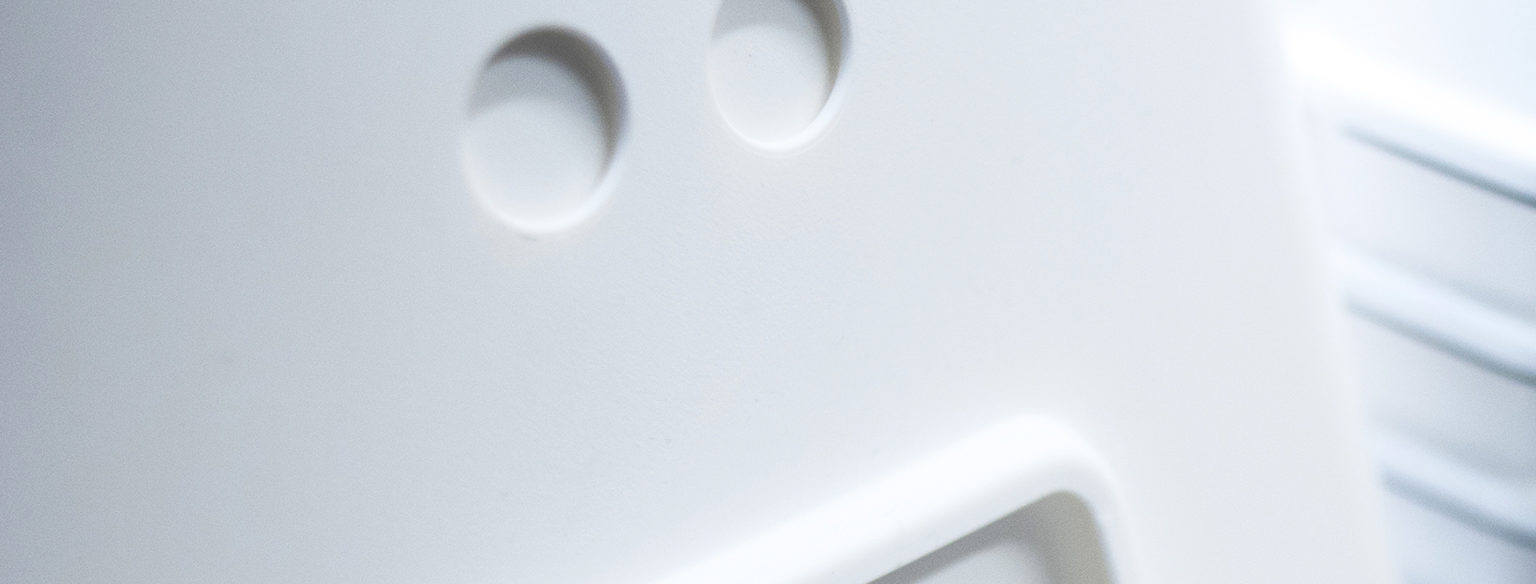
LASING ARTIFICIALS wITH ECOMARK:
EFFICIENT, COST-EFFECTIVE, PRECISE
LIMITLESS VARIETY OF APPLICATIONS
AND CUSTOM-FIT SOLUTIONS FROM ECOMARK
The range of applications for laser marking or laser labelling of plastics is broad, as plastics are used everywhere. Automotive parts such as buttons and switches with day & night design, electrical components, sensors and keyboards can be laser marked quickly, precisely, gently and permanently. Laser marking is also the marking technology with unbeatable advantages for tools, electronic and household appliances, medical technology products, consumer products and much more.
Barcodes, QR codes and data matrix codes, logos and decorative engravings, product information, expiry dates or security markings as protection against plagiarism - everything is possible. Compared to printing or stickers, laser marking of plastics often delivers more durable, lightfast results and is also usually more economically viable, as no consumables are required and no tools can wear out.
Depending on the type of plastic, either the fibre laser, the YAG laser or the CO2 laser can be used for laser marking. It is important to know and take into account the properties of the different plastics in order to use the right type of laser. For hard plastics such as the thermoplastic acrylonitrile butadiene styrene (ABS for short), pulsed fibre lasers are used. For soft, flexible thermoplastics such as polyethylene, a continuous wave fibre laser makes more sense.
When choosing the appropriate laser marking process, the various properties and the associated reactions of the plastics must be taken into account. Different processes come into question, depending on the material and the intended use of the laser marking:
- Colour removal/material removal: This type of laser marking is particularly suitable for multi-layered or painted plastics. The laser beam removes the top layer of paint, varnish or coating so that the differently coloured base material underneath becomes visible. The laser marking is created by the absorption of the laser light from the top layer, which heats up and evaporates. The colour differences to the base material are usually very large, so that the colour/material removal is one of the most contrasting laser markings and is preferred especially in the automotive industry for day/night design.
- Carbonising: The laser marking process carbonising is used for light-coloured plastics as well as organic materials. During laser marking, plastic bonds are broken. The burnt pigments of the plastic always lead to a laser marking with dark colouring, as carbon is released. The discolouration is therefore always grey to black. Due to the locally limited heating, the surface remains almost undamaged, so that this type of laser marking is very gentle on the materials.
- Colour change / foaming: The absorbed light leads to local heating, which destroys the colour pigments in the plastic together with the carbon and they evaporate. In the process, the carbon oxidises to CO2, which escapes from the plastic and forms a foam layer. The colour change is thus visible and the foaming of the material is noticeable, as the gas bubbles melted during laser marking increase in volume and become firmly bound into the material structure during cooling. The resulting colour depends on the composition and additives of the respective plastic. Dark plastics receive a white laser marking and light plastics are marked dark. This results in an excellent contrast.
LASER MARKING PLASTICS WITH ECOMARK:
ADVANTAGES THAT ARE WORTH SEEING
- Flexible use for almost all surfaces and products
- Fast thanks to EcoMark software eliminates set-up and adjustment times
- Cost-effective low-maintenance operation without consumables
- Resistant to mechanical stress and chemicals, heat, cold and moisture
- Reliably clean, permanent marking with the highest precision
- Durable robust, reliable top quality

